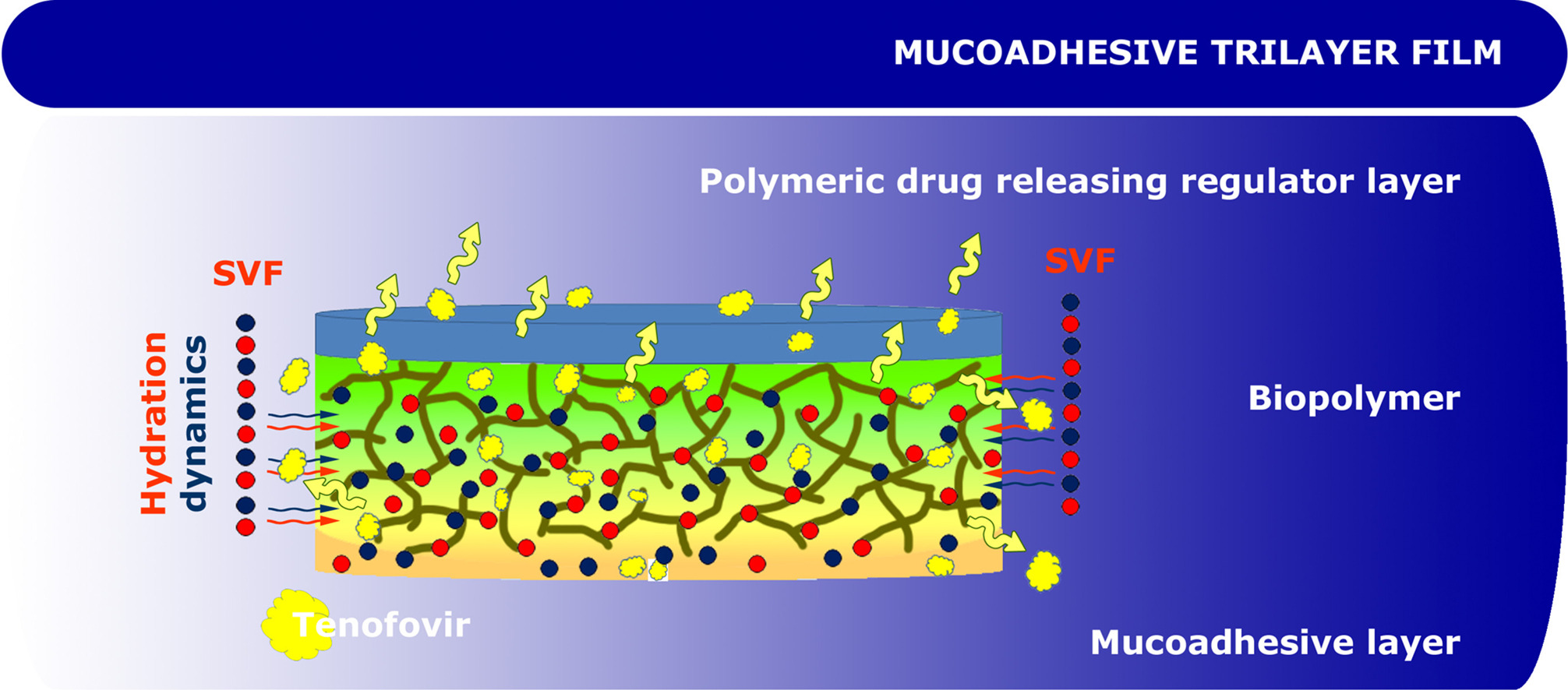Optimized hydration dynamics in mucoadhesive xanthan-based trilayer vaginal films for the controlled release of tenofovir

Karaya gum, pectin and xanthan gum have been tested as candidates for manufacturing mucoadhesive trilayer films containing ethylcellulose and chitosan for the vaginal administration of the antiviral Tenofovir (TFV). The swelling profile correlated with the amount of mobile dipoles determined by impedance spectroscopy allows the determination of the hydration dynamics of these films.
Highlights
Hydration dynamics of polymer films were studied by impedance spectroscopy.
Polyelectrolyte complexes of different molecular weight modify the ionic mobility.
Drug release mechanism determined by the size of the polyelectrolyte complexes
The fast water penetration has been demonstrated to favor the formation of polyelectrolyte complexes (PEC) via hydrogen or ionic bonds which would favor a controlled release. The incorporation of an inorganic drug release regulator induces the weakness of the polymeric chains thus enhancing the ionic mobility via the formation of low molecular weight PECs in films manufactured with karaya gum.
Due to the different mechanical properties of the individual components, pectin-based films failed for a potential pharmaceutical formulation. However, mucoadhesive trilayer films produced with xanthan gum have demonstrated a moderate swelling, improved wettability and a controlled release of TFV.
Download the full article as a PDF here or read it here
Article information: Araceli Martín-Illana, Eva Chinarro, Raul Cazorla-Luna, Fernando Notario-Perez, M.D. Veiga-Ochoa, Juan Rubio, Aitana Tamayo, Optimized hydration dynamics in mucoadhesive xanthan-based trilayer vaginal films for the controlled release of tenofovir, Carbohydrate Polymers, Volume 278, 2022. https://doi.org/10.1016/j.carbpol.2021.118958.

